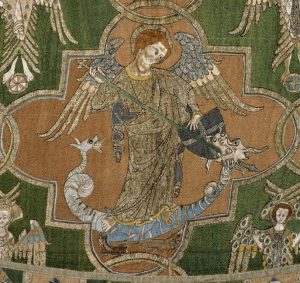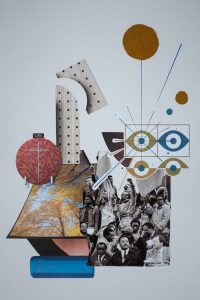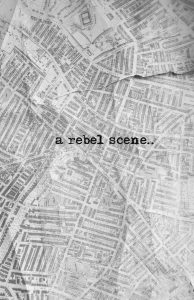Many congratulations to those students who graduated on Wednesday this week! It was great to be sitting on the platform at this graduation ceremony, and to see familiar faces from our Cert HE, Graduate Certificate and BA programmes line up, have their names read out by the Executive Dean, Prof. Hilary Fraser, and go on to shake hands with the Master of Birkbeck, Prof. David Latchman, the President, Joan Bakewell, and to receive their degrees. We also saw three History of Art students walk up to get their doctorates: Dr. Frank Ferrie, Dr. Kirstie Imber and Dr. Michael Davies. (How nice to be able to give them their titles!). Here are some snaps I took on my phone at the reception afterwards:
Dr. Frank with his supervisor, Dr. Robert Maniura, both looking rightly proud
Ioanna Makri and Clara Neta, celebrating their BA Hons degrees
– and David Daly (BA Hons History of Art) managing to keep hold of both a glass of wine and an art history book! So impressed to see a student still at the books, even on graduation day..
* * * * *
At the start of the week, I was delighted to be able to send around more information about our Careers and Employability programme, being run for History of Art students in 2016-17. Thanks to a generous award from the Birkbeck Alumni fund, and the hard work of Mosh Aboobaker and his colleagues in the Careers and Employability team, we have been able to lay on this special programme for students in the department, designed to help with career options, skills, and connections with key institutions and industries.
We’re now encouraging students to sign up for the first part of the programme: a series of six workshops, running from later this month through to late May 2017, covering a variety of important topics – from career possibilities in the Arts, through use of social media and internships, to CVs and interview techniques. You can find full details on this flyer. Do go to the eventbrite page, and sign up for as many of these free, hour-long events as you can. You’ll see we’ve arranged these as one hour sessions from 4-5pm, in the hope that people will be able to fit them in before classes.
It’s a great opportunity, to take advantage of specialist advice, particularly tailored to History of Art students. It’s also important to the department that these go well, and have good attendance, as we can then make a case to run this programme again in the future! The programme is primarily designed for BA and Graduate Certificate, and MA students in the History of Art department – but we’re also making the sessions available to any Cert HE or MPhil/PhD students who may find them relevant. We’re also currently working on developing a series of ‘masterclasses’ with alumni who have used their Birkbeck degrees to good effect – and are developing a workshadowing programme, with a view to giving students the opportunity to spend time with alumni at their current places of work, to learn more about various careers in the Arts at first hand. Watch this space!
* * * * *
Some dates for your diaries…
* The next event in the calendar of the History and Theory of Photography Research Centre is next Wednesday, 16th November – Dr. Samuel Bibby, from the Association of Art Historians, will be speaking about ‘”New! Art… Plus Added Social Purpose”: BLOCK and the Periodical Landscape of 1970s British Art History’ (6:00-7:30pm, Room 106, School of Arts)
* Then, the following week, early period colleagues will be running not one, but two events! The next Murray research seminar is coming up on Thursday 24th November at 5pm (Room 106, School of Arts): Dr. Pippa Salonius will be speaking on the topic of ‘Authority, Nature and the Image’ in medieval art and culture. Then, the following day, Friday 25th November, there will be a one-day interdisciplinary conference on Medieval Textiles: Meaning and Materiality, also supported by the Murray Bequest. Prompted by the V&A Museum’s current exhibition of medieval embroidery, Opus Anglicanum, this event will be bringing together leading and emerging scholars working on questions of meaning and materiality in medieval textiles – both real and imaginary.
* * * * *
I was delighted to be sent the piece in the Guardian today, written by an alumna of our MA History of Art programme – Inga Fraser. Do have a look at her story, about how her Masters degree helped her to develop her career. But I’m now going to hand over the final part of this blog to one of our current MA students, Sunil Shah. As well as working towards his Masters in History of Art, Sunil also works as an artist, and a curator….
Sunil Shah, Research and art practice in ‘a rebel scene’
“As an independent curator, artist and a student on the History of Art MA programme at Birkbeck, it is always useful when you can draw your academic research into the real-world scenarios you face as a practitioner. Earlier this year I was co-commissioned by the New Art Exchange in Nottingham for a social engagement project that supplemented a thematic exhibition about street art, protest and activism in Egypt and Iran. The gallery wanted to engage Nottingham’s activists and protest groups to provide a local context for the show. Alongside Kajal Nisha Patel, a Leicester-based artist, we had a brief to explore Nottingham’s rich history of political activism and connect that to the contemporary state of things.
Such a commission was a minefield of potential representational issues. Problematic areas we found in social practice and participatory art ranged from addressing structures and hierarchies within art’s institutional apparatus, the authorship and political positioning of the artist and authentic representation of political and social struggle. We needed a critical approach to this commission and so I decided to base my MA Research Project on this very subject. Through the research, we broadly addressed the history of art and politics from Dada up to the present as a way of revealing how artists, activists, theorists and institutions have typically tackled some of the complex questions that arise from this form of political agency.
The research helped in defining a methodological approach to the commission – how we worked with the participating groups and how we decided to present the results of the collaboration. We ended up with an approach that aimed to level art and institutional hierarchies, renounce authorship and maintain the creative expression of those involved. We found the research to be a critical and essential part of the commission, without which its meaning and relevance might have been reduced. We worked with four local groups: Nottingham Womens Centre; the Sparrows Nest Anarchist Library and Archive; rebel women; and Reel Equality. The exhibition is titled ‘a rebel scene’ and consists of a poster paste-up wall, participant photo-collages and a political slogan text installation. It is on now at the New Art Exchange in Nottingham and continues until 18th December 2016.”
Do visit the display if you have the opportunity! Thanks Sunil.








